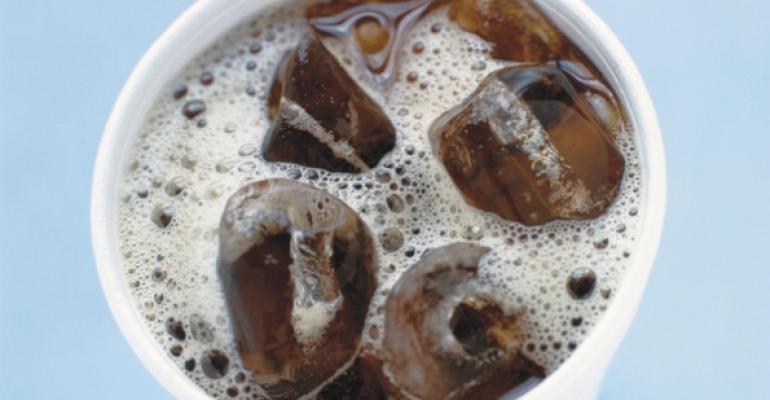
Increased media coverage and pressure from consumers are making food additives a topic of growing concern. In response, many food manufacturers are now cleaning up their ingredient lists to appeal to health-conscious, label-reading consumers.
What are additives?
Food additives — which include preservatives, colorings and flavorings — are substances that are added during food processing to improve or preserve nutrient value, prevent spoilage, improve texture, and/or enhance color and flavor.
The Food and Drug Administration and the Agriculture Department regulate the use of additives in products sold in the United States. Many — such as ascorbic acid (vitamin C), riboflavin and sodium bicarbonate — are recognized as safe, and, in addition to serving other purposes, some may even improve the nutritional value of a food.
RELATED
More from Anita Jones-Mueller
• Moving into healthful positioning
• How restaurants can capitalize on the Mediterranean diet
• More from Healthy Dining
NEWS FROM NRN
• Restaurants boost salads for spring, summer
• Native Foods Café receives $15M investment
• More Health & Nutrition news
Consumer concerns
While additives have been approved for human consumption, some have been known to induce allergic reactions, and others have been linked to asthma, attention deficit hyperactivity disorder and cancer — although research remains inconclusive.
Additives such as nitrites, common preservatives used in cured meats; sulfites, used to prevent discoloration; and monosodium glutamate, or MSG, are required to be identified on food labels due to the potential adverse reactions that some people may experience.
Identifying additives on manufacturers’ labels
While a general rule of thumb is, “If you can’t pronounce it, it’s most likely an additive,” the FDA provides a complete list of food additives on its website for your reference.
However, it’s important to be aware of possible alternative names under which potentially harmful additives may be listed. For example, when MSG is added as a direct ingredient, it is required to be listed on the label. But MSG may be found naturally in a different form, such as hydrolyzed yeast extract, and will not be listed as MSG on the food label.
Which additives should we be most cautious about? The Center for Science in the Public Interest currently warns consumers to be aware of the potential risks of the following artificial additives:
Acesulfame potassium
What it’s used as: Artificial sweetener
Where it can be found: Baked goods, gelatin desserts
Potential risks: Studies suggest a possible link to cancer in rats, as well as a negative effect on the thyroid in rats, rabbits and dogs
Aspartame
What it’s used as: Artificial sweetener
Where it can be found: “Diet” foods, soft drinks, drink mixes, gelatin desserts, frozen desserts, jam and fruit spreads, yogurts, condiments, breakfast cereals
Potential risks: Headaches and dizziness; studies also indicate a connection with development of lymphoma, leukemia and tumors in rats
Azodicarbonamide
What it’s used as: Bleaching agent, flour improver
Where it can be found: White breads and rolls
Potential risks: When used in baking products, forms two potentially carcinogenic compounds shown to cause cancer in mice; currently banned in Australia, Singapore, England and other European countries
Blue 1, Blue 2, caramel coloring, Red 3, Red 40, Yellow 5, Yellow 6
What they’re used as: Artificial food colorings
Where they can be found: Beverages, candies, baked goods, sausages, gelatin desserts, pastries
Potential risks: Occasional allergic reactions and hypersensitivity in some people; hyperactivity in some children; studies indicate a possible connection with cancer in mice, thyroid tumors in rats, and tumors of the adrenal gland and kidney in various animals; also shown to negatively affect brain neurons of rats; currently banned in Norway and Austria, and many European countries require a warning notice on product labels

Are your customers concerned about food additives? Join the conversation in the comments below.
Butylated hydroxyanisole, or BHA
What it’s used as: Preservative
Where it can be found: Cereals, potato chips, vegetable oils
Potential risks: Studies indicate it causes cancer in rats, mice and hamsters; currently banned in Japan, England and other European countries
Potassium bromate
What it’s used as: Flour improver
Where it can be found: White breads and rolls
Potential risks: Shown to cause cancer in animals; currently banned worldwide except for the U.S. and Japan, and products in California might be required to carry a warning label
Propyl gallate
What it’s used as: Preservative
Where it can be found: Vegetable oils, meat products, potato sticks, chicken soup bases
Potential risks: Low doses shown to cause multiple cancers in rats
Sodium nitrate/nitrite
What they’re used as: Preservatives, colorings, flavorings
Where they can be found: Bacon, hams, luncheon meats, smoked fish, corned beef
Potential risks: Linked with various types of cancer in children, pregnant women and adults
Tert-Butylhydroquinone, or TBHQ
What it’s used as: Preservative
Where it can be found: vegetable oils, snack foods, cereals, fat-containing foods
Potential risks: Studies show increased incidence of tumors in rats
If you’re interested in identifying and/or removing potentially harmful additives from your menu, start the dialogue with your manufacturers. Artificial food colorings, for example, can be replaced with natural colorants, such as annatto, capsanthin (a paprika extract), marigold, beet, carotenes and turmeric. And preservative BHA can be replaced with a safer alternative, such as vitamin E. Check to see if your manufacturers are willing to work with you to reformulate their products, or begin looking into alternative manufacturers that provide products free from the above-mentioned list of additives.
Healthy Dining offers free consultations and can work with you and your manufacturers to help identify artificial additives and preservatives in your products.
For more information on additives, their uses and the safety approval process, visit the FDA’s Overview of Food Ingredients, Additives & Colors.





